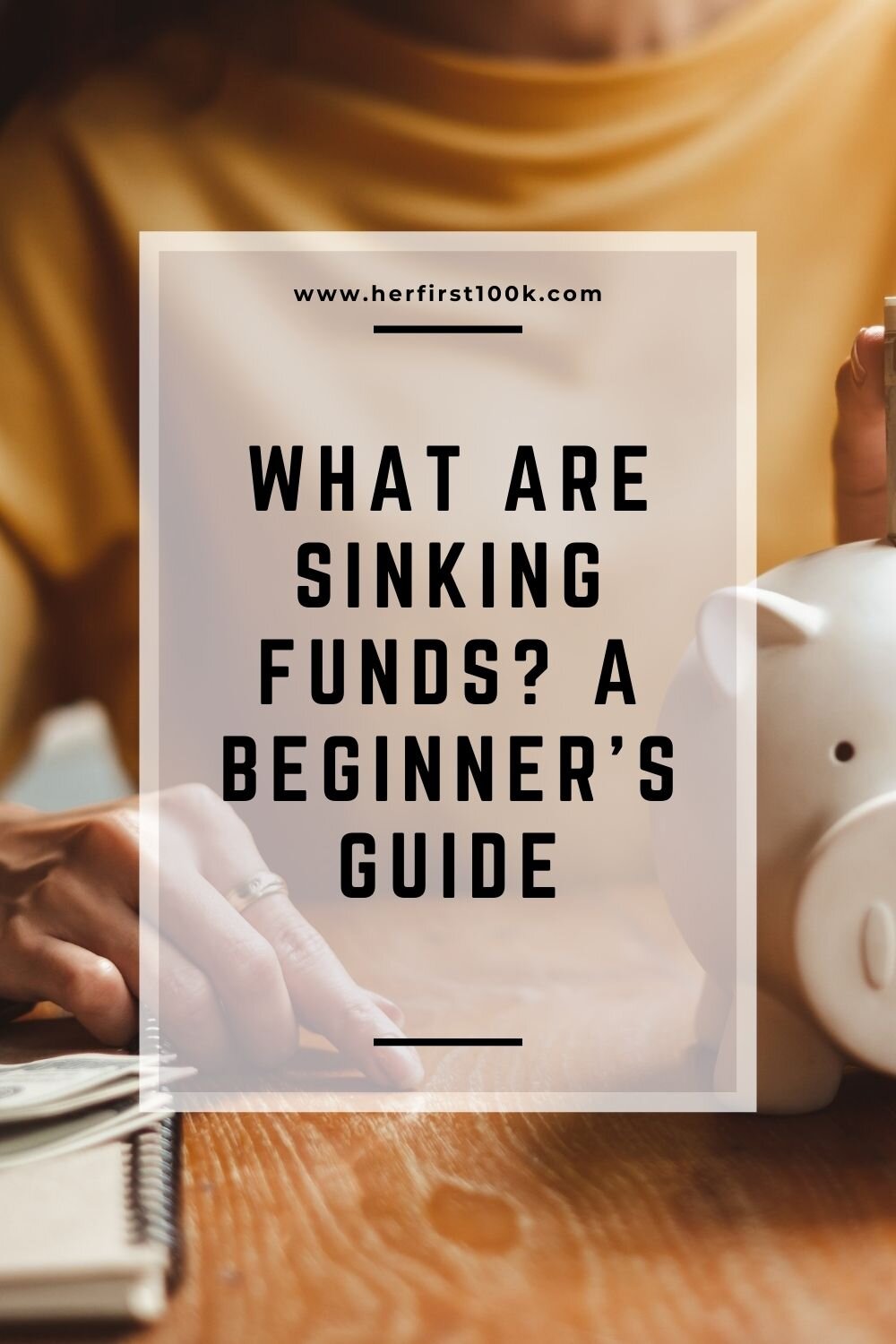The following article may contain affiliate links or sponsored content. This doesn’t cost you anything, and shopping or using our affiliate partners is a way to support our mission. I will never work with a brand or showcase a product that I don’t personally use or believe in.
A Guide to Sinking Funds
When you’re building a budget for the first time, it’s a good idea to keep your focus on the micro-level –– figuring out how to budget out a single paycheck or a monthly income. As you get used to the fluctuations in your budget and start to get better at sticking to it, it’s time to invite in a more macro focus on your finances.
One of those macro budget pieces is something we call sinking funds. Despite their slightly scary-sounding name, sinking funds are one of the easiest practices you can add to your budgeting to help you plan for the future.
I like to think of sinking funds as piggy banks for your big purchases. You build them up with the extra cash you have lying around and save them for the right time. Here’s how to build a sinking fund and how best to use it.
How to build a sinking fund
Diving a little deeper, a sinking fund is a fund you use to build deeper savings in a particular area. For example, if you put aside $50 a month for gas and only spend $35 that month, you can leave that extra $15 in your “sinking fund” towards car expenses or gas. This is super helpful, especially if you have very different financial needs each month. That extra $15, in this case, is added to next month’s gas budget, which gives you $65 next time around.
You could also decide to put that extra $15 in another sinking fund that you’re using to help you save up for a future event. This is a great way to build up savings without taking out anything in your budget. You might be surprised by how much you’re able to save with a little here and there!
What sinking funds help with
Sinking funds are great for a myriad of things. Let’s say you have a car that’s prone to breaking down a lot –– you can build a sinking fund where you put a little extra into saving for the next repair or even a downpayment on your next car. This might be budgeted out as a part of your auto expenses or in its own category of your budget.
Another great use of sinking funds? Holidays and vacations.
Especially if you’re a big gift giver, you’ll want to create a sinking fund for yourself to help save money over a period of time for those special birthdays and holidays. You can build these funds using two different methods –– build a “special events” section into your budget and put a predetermined amount away each paycheck into that fund or use the extra money from areas where you came in under budget each month! You can also utilize both options at the same time.
For example, let’s say you want to save $600 to buy Christmas gifts this year. If you are only planning on saving for it through a sinking fund, you’ll want to add a $50 sinking fund category to your budget starting in January (you can always start later and save more per month –– whatever works for you).
However, let’s say you also add whatever you underspend in certain categories to help you get there faster. Maybe even as little as $10 a month from other categories in your budget –– now you’re filling your “piggy bank” even quicker!
Sinking fund vs. traditional savings
So, where do you keep this extra cash? It largely depends on how you have your banking account set up, but I recommend keeping these additional funds out of your checking account so you won’t be tempted to spend it. I recommend a HYSA for emergency funds and other short-term savings goals. You can even open multiple HYSAs to keep your sinking funds separate from your emergency fund.
You can also build a simple spreadsheet to track where to delegate that money in your emergency fund if you prefer to keep one account. Whatever works best for you!
Join a community that’s all about building budgets and other smart money moves: The 100K Club
Let’s chat quickly about sinking funds vs. emergency funds –– when you’re working on building your 3-6 month emergency fund, you might consider using your “budgeting leftovers” to help get you to your goal faster. This is totally an OK thing to do, but I’d like to encourage you to remember the importance of still living life and enjoying it while building your emergency fund or paying off debt.
That’s why I think sinking funds are great ways to save for “fun” stuff while still contributing to and building your emergency fund.
Set a goal and stick to it
There’s a joke out there that people are either spenders or savers, but I don’t agree entirely that we’re all one or the other. I think we encompass both, just in our unique ways. Regardless of which way you may lean on the “spender vs. saver” spectrum, I’d love to caution you: set goals and stick to them with sinking funds.
It’s so easy to say, “I’m going to save $400 for Christmas,” and then let that fund continue to grow after you’ve reached the goal. Is it a bad thing to have a buffer? Hell no. But especially if you’re a heavy saver, it can be tempting just to keep saving money instead of using it well.
I see this a lot with emergency funds, too. People who have HUGE sums of cash stashed away in an emergency fund, or general savings account with no real goals for it –– meanwhile, they’re barely contributing to a Roth IRA or other retirement out of fear.
That’s why I think it’s important when working with sinking funds to decide on your goal and then plan what to do with that cash afterward. Whether investing or saving for another short-term goal, don’t just let your money sit around without a purpose.
In the same turn, if you’re a spender, make sure you’re not setting a goal and then blowing it out of the water when it comes time to buy. There will always be situations where unexpected costs come up, but the goal with sinking funds is not to break into an emergency fund. So, if you set a goal to save $1500 for a vacation sinking fund and start booking $3000 of stuff to do, you’ll know you either need to re-adjust your expectations or build a bigger fund.
Sinking funds are excellent tools in your tool kit for getting better with your finances and helping you save for the things you love. Don’t forget to sit down each month for your money date to figure out where you might be able to start funding your next sinking fund!
Additional reading and resources:
Blog: The Best (and Worst) Advice for Paying Off Debt
Podcast Episode: The Financial Game Plan (aka “Where do I start?!”)



